
Updated March, 2024
Lush Mediterranean scenery, cheerful Turkish music playing on the radio, the call to prayer echoing from the nearest mosque, minarets pointing to the sky, smell of spices in the air, Turkish tea at every corner…Turkey is a sensory overload.
Man, it sure does feel like you’ve come a long way from home as soon as you step into this colorful country. In fact, for Europeans, it offers a real Oriental adventure without traveling too far.
Next to Antalya, the country’s tourism capital, Geyikbayırı is Turkey’s largest and most visited sport climbing destination. It gets its name from the village of Geyikbayırı (“deer hill”), located just above the crags. Although very close to Antalya, the entire place has a very rural and authentic feel.
Long stretches of gray, reddish, and orange limestone offer all styles of climbing you could think of – juggy overhangs, tufas, stalactites, slabs, crimpy vertical faces, technical cruxes, roofs, caves, and pockets. Hundreds of routes of all difficulties near evergreen pine forests, sunshine, picturesque Mediterranean beaches, ancient cities, and great food. Is this a climber’s paradise or what?
I’ve put together this guide to climbing in Geyikbayırı that includes everything you need to know in order to plan an unforgettable rock trip – from seasonality and climbing scene to the best sectors, what to eat, and other useful travel advice. So get ready for a true Turkish delight served only to the curious climbers.
In this article
Seasonality

Photo by Wild Adventure Film
The best time to climb in Geyikbayırı is from October till April, making it the perfect winter getaway for Europeans. Summers are too hot for climbing here.
The climbing sectors are located above Antalya, at an elevation or around 400 to 600 meters. There are sunny sectors as well as crags that are always in the shade. All of these are within walking distance from one another, which makes it easy to adjust to the weather and temps. The farthest sectors are about a 25-minute walk from one another.
December and January are typically the rainiest months. The tufas can get wet after heavy rainfall. The rest of the rock, especially the sunny sectors, usually dries out pretty fast and it’s often possible to climb within hours after it rained.
The climbing scene

Photo by ABC Climbing
For most people, Antalya is synonymous with the Eastern Mediterranean, endless beaches, and touristic vibes. Yes, there’s no denying that it’s touristy. But for climbers, Antalya has a whole different meaning.
When you climb in Antalya, chances are you’ll find a blend of various nationalities at the crags, which gives the place a very international vibe. Everyone pretty much minds their own business (or should I say routes) during the day. In the evening, climbers socialize at the restaurants/terraces of the campsites in the area.
There are several campsites/guesthouses near the crags. Some of these businesses are owned by Turks, others by Europeans.
Unfortunately, some of the older and popular climbing routes in Geyikbayırı are already polished. The iconic routes can get crowded and you may have to wait in line. Luckily, new lines are being bolted each year and entire new sectors open up. So, if you’re looking for something that’s not as busy and some quality rock with great friction, just opt for the newly-established sectors.
At the same time, older routes are constantly being re-bolted, so most of the bolts are no older than 10 years.
There’s a detailed climbing topo for Antalya that includes climbing at Geyikbayırı, Citdibi, Olympos, and more. Updated editions come out once in a few years. Most campsites near the crags sell the topo.
Read more >> Chilling & Climbing in Kaș, Turkey
If you don’t have the topo, you can also get around with thecrag.com. At many sectors, the routes have the name written at the bottom. However, there are sectors and new lines that don’t.
The most popular climbing sectors in Geyikbayırı

Photo by ABC Climbing
Climbing in Antalya is renowned for its tufas. And alas, there are some great tufas to hug. At the same time, you can find a full range of climbing styles and grades, from 5a to 9a. There are currently over 1,000 sport climbing routes at Geyikbayırı, the majority in the 6a to 7c range. It’s a fantastic place to get some mileage, tick some projects, and up your game because it doesn’t take long to adjust to the style thanks to the high density of routes.
There are 40+ sectors, all easy to reach. If you’re staying at one of the campsites in the area, you don’t need really need a car once you get there. It’s a nice little stroll to get to them, between 5 to 20 minutes, depending on where you’re staying.

Sarkit is the most iconic climbing sector in Geyikbayırı and many climbers flock here. It’s sunny almost all day and it’s located approximately in the center of the climbing area. Next to it, Mağara and Anatolia sectors have pretty much everything you could ask for and tend to get a bit crowded as well.
Further down the road towards Antalya, Mevlana is yet another big and popular sector (a bit polished, too). Thanks to its exposure and shape, it’s one of the warmest sectors in Geyikbayırı and thus a good option for cold days.

Most of the Trebenna sector is in the shade and is a popular choice during warmer days. You’ll find some great lines here – long, pumpy, and quite spectacular.
Küllüin has several smaller sectors, which get sun in the morning and shade in the afternoon. You’ll find really steep lines as well as slightly overhanging crimpy routes. Just after Küllüin, there’s another hidden gem – Rüzgarlı Bahçe – with an interesting variety of routes.
Alabalık is a crag parallel to the main two-kilometer crag, located under the Antalya-Geyikbayırı road, on the valley. Turkish Standard is another sector underneath the Antalya-Geyikbayırı road, right near Josito Camp. This is very popular with those staying at the camp since it takes 2-5 minutes to get to the routes. It also gets a lot of sun and is a preferred crag during colder days.
In between all of these, there are many other sectors that are just as aesthetic, each with their own personality and perhaps not as polished or crowded.

Photo by Káťa Tran
Echoes, Koridor and Top Alani are the last sectors as you descend towards Antalya. Echoes Left gets sun in the morning and shade in the afternoon, while Echoes Right gets a lot of sun. They have some interesting pumpy, bouldery, and steep lines to offer. Koridor is a crimpy sector that is mostly in the shade, while Top Alani has nice vertical and slab climbing, mostly in the sun.
What to pack

Photo by Dylan Wyer
It’s best to bring your entire climbing gear. If you are unable to, some of the campsites in the area do rent climbing gear. Some even have small climbing shops.
A 70-meter rope should suffice for the majority of the routes. Do keep in mind that there are some longer routes here, over 30 meters long, too. Also pack 20+ quickdraws.
If you travel to Geyikbayırı to hug some tufas, bring a knee pad, too. If you don’t have one, you might find some for sale at the campsites. There are a couple of Decathlon stores in Antalya, but they’re not so well-stocked.
There are both sunny and shady sectors. The temp difference between sun and no sun is quite significant, so make sure you pack enough layers of clothes. In winter, nighttime temps up in Geyikbayırı can drop to zero degrees Celsius, sometimes even below.
Where to stay

When climbing in Geyikbayırı, there are two preferred options: staying in Antalya or at one of the campsites/guesthouses near the crags, just under the village of Geyikbayırı.
Accommodation
The city of Antalya has loads of accommodation options, from all-inclusive hotels to Airbnbs. If you choose to stay in Antalya, the best option would be Konyaaltı district, as it’s the closest to the climbing area – about 15-20 kilometers.
Campsites

If you prefer to stay closer to the routes, there are a bunch of accommodation options near the crags, from pitching your tent at one of the many campgrounds to staying in a bungalow or guesthouse. The most famous and oldest campsite in the area is JoSiTo Camp. This is also the most crowded. Many others have opened up in the last decade or so, offering excellent conditions. Some of the most popular campsites in Geyikbayırı are Flying Goat Camping, Camp Geyik, Rido Camp, Kezban’s Guest House & Camping, Peak Guesthouses, The Land Geyikbayırı.
Most of the campsites near the crags also have their own restaurants serving both traditional and European food.
Dirtbagging
Going up to the village from the crags, just above Küllüin sector, there is a parking space with a couple of freshwater springs where you can stock up on water. On weekends, you’ll find families here making gözleme (Turkish pies), bazlama (Turkish bread), and çay (Turkish tea), serving them at tables laid out in the parking space. You may also find some fresh fruits, vegetables, and other local produce here.
Wild camping in Turkey is a bit of a gray area. I’ve never seen tents parked outside the campgrounds in Geyikbayırı, but maybe they just try to keep it low key (and do a great job at it). If you travel by camper van, there are a few preferred spots near Küllüin climbing sector, on the way to Alabalık just under the main road, or near the freshwater springs before the village. During winter months, you’ll likely see a bunch of van dwellers.
Read more >> The Dirtbag Way
What to eat

Turkish food is de-li-cious. Finger licking. Cheap. Fresh. Flavorful.
There’s just so much variety. Whether you’re a fan of meaty products or vegetarian treats, you’ll find a chock-full of dishes to delight your palate. To get the most of your Turkish food experience, head to Antalya or to the local restaurants along the road from Geyikbayırı to the city.
Start your day out right with a filling kahvaltı (Turkish breakfast) and a fragrant Turkish coffee.
For some meaty treats, try the many kebab varieties (Adana kebab, Urfa kebab, şiş kebab, döner, etc.), köfte (meatballs), lahmacun (pita topped with minced meat and veggies), pide (flatbread with a variety of fillings), iskender kebab (strips of lamb in a pita sandwich), hamsi (Anatolian anchovy), dolma (stuffed peppers, vine leafes, cabbage leaves).
For vegetarian and vegan options, try the menemen (Turkish scrambled eggs), çiğ köfte (bulgur balls), imam bayildi (stuffed eggplant), vegetarian dolma, vegan soups (çorba), pilav (Turkish rice), and the many pastries like su böreği and börek.
Oh, and the street food is to die for. There are loads of joints making kebab and döner, a juicy and flavorful wrap with either chicken (tavuk), veal (dana eti) or lamb (kuzu).

Gözleme are a sort of thin Turkish pies cooked over a wooden stove. There are many places that make them along the road Geyikbayiri. There’s also the gözleme place just before the village of Geyikbayiri, above Küllüin sector, next to the water spring. This one is open during weekends.
And you can always grab a simit (Turkish bagel) at the street corner or neighborhood bakery (firin).

Then there are the desserts. I could write entire pages about Turkish desserts, but let me just tell you this: even the smallest supermarkets have some kind of dessert that’s simply ravishing. Make sure to try the many different types of baklava, kazan dibi (burnt milk pudding), cevizli sucuk (walnut sausage), fırın sütlaç (baked rice pudding), and revani (semolina cake in syrup).
Neighborhoods in Antalya have firin cafes that serve coffee and all sorts of pastries, including mouthwatering baklavas. There are also many street-side shops specializing exclusively in baklava or Turkish delight (lokum). Obviously I can’t forget Turkish ice cream (dorduma), traditionally served with a little show.
From the farmer’s markets, make sure you try local delicacies like fig jam, pekmez (molasses-like syrup made from crushed fruits – carob, date, mulberry, grape, fig, etc.), honey (bal), dried fruits, walnuts, pistachios, fresh pomegranate juice, and ada çayı (mountain tea).
Rest days

Oh, where to start…there’s a lot to do in and around Antalya when you’re not climbing. You can visit the many impressive historical sites and ancient ruins, chill at the beach, have a dip in the Mediterranean, or go hiking in the mountains.
The nearest beach from Geyikbayırı is Konyaaltı Beach, an 8-kilometer stretch of Blue Flag pebble beach at the Mediterranean, against the backdrop of the Taurus Mountains.

The Old Town in Antalya, Kaleiçi, with its labyrinthine cobbled streets surrounded by ancient walls, is a must-see. You’ll find an interesting blend of Greek and Ottoman architecture and historic sites, a bazaar with many delicacies and local products, souvenir shops, ancient ruins, restaurants, cafes, and a picturesque old harbor. From the Old Harbor in Kaleiçi – Antalya Marina – you can hop on a boat tour along the city’s coast and its many natural sights.
Then you have the impressive ancient cities around Antalya – Termessos, Aspendos, Phaselis, Perge, Olympos, and Myra with its famous Lycian tombs. These are only a few of the most famous and visited ones; there are ancient ruins almost everywhere in the pine forests and mountains around Antalya. There’s even an ancient city above the climbing sector at Trebenna – Trebenna Ancient City – that can be reached via an easy hike either from the crags or from the village.

Every Sunday, there’s a market (pazar) in Akdamlar, the village beneath the crags. It’s an interesting place to visit either on a rest day or on Sunday morning before climbing at Geyikbayırı. You’ll get a feel of the traditional Turkish market, with loads of produce, clothes, souvenirs, and gözleme stands. It’s a good place to stock up on fresh and cheap provisions for the whole week.
You can also pay a visit to the Tuesday market in the Liman neighborhood or the Saturday market in the Hurma neighborhood in Konyaaltı, both of them in Antalya.
If you’re traveling in winter and there’s enough snow up in the mountains, you can go skiing in Saklıkent, about an hour from Antalya. That’s right, in Antalya you can climb, ski, and bathe in the Mediterranean all in the same day!
Other useful travel advice

Getting there
By plane & rental car
Most climbers prefer to fly into Antalya Airport (AYT) and rent a car from there. If you’re staying at one of the campsites in Geyikbayırı, they can arrange airport transfer for you. Some campsites also offer rental cars.
By plane & public transport
If you fly into Antalya and don’t want to rent a car or use the transfer service, it is possible to get to Geyikbayırı via public transport, albeit it is a bit of an adventure, especially if you come to Antalya for the first time. If you’re up for it, here’s the breakdown:
- From the airport, take shuttle bus 600 all the way to Antalya Bus Terminal (Otogar). These buses run every 30 minutes. It takes 45-60 minutes to get from the airport to the Otogar.
- Next to the Otogar, there is a bus station. Take bus 521 or TK51. These are smaller buses called dolmuş.
- Bus 521 departs for Geyikbayırı twice times a day – early in the morning and in the evening. During the rest of the day, bus 521 will only take you as far as Akdamlar/Çakırlar, the village before Geyikbayırı, at the base of the mountain. From there, you can walk or hitchhike the remaining 5-7 kilometers to the campsites/village.
- Bus TK51 only goes as far as Akdamlar/ Çakırlar.
By car
You can also travel by car, like we did from Romania. It takes a while but it sure makes for a nice road trip. If you have time, take the scenic roads.
The roads in Turkey are really good.
Highways and bridges have tolls, paid through a High-Speed Toll System (HGS). If you plan to drive on the Turkish highways and use the bridges around Istanbul, you must register for HGS, which comes in the form of a sticker that you apply to your windscreen. You can buy the HGS sticker at petrol stations on the highways, at Turkish Post branches (PTT), and at some banks. When you buy the sticker, you can also add credit to your HGS account. To view your HGS balance, go to this page (and use Translate to English option).
Getting around
The best way to get around Antalya and Geyikbayırı is by car.
If you plan to stay in Antalya, you must take into account the 15 to 35 kilometers drive to get to the crags (depending on the part of the city you stay in, since the city is huge). What’s more, a car gives you the freedom to visit the local attractions on your rest days and even take a trip to the neighboring climbing areas at Çitdibi and Olympos.
There’s public transport as well, but regular buses will only take you as far as the village of Akdamlar. From there, you have another 5-7 kilometers, which you walk or hitchhike. There is a bus that goes all the way up to the village of Geyikbayırı, but only twice a day (morning and evening).
Cultural aspects

Turkey is a Muslim country. It’s also a secular country, meaning that state and religion are separate. What does this mean? Well, when you’re on the streets in the larger cities, you’ll see that most Turkish people dress just like Europeans. At the same time, there are conservative families even in the big cities. In rural areas, most women wear a scarf to cover their hair and Turkish şalvar (traditional baggy pants).
Although full of various nationalities from around the world, the climbing destination of Geyikbayırı is in a rural area. So please be mindful of the local culture and dress modestly as much as you can.
Regardless of where you’re staying, chances are you’ll overhear the call to prayer (ezan) from the nearest mosque five times a day, inviting the faithful to the prayer ritual (namaz) – dawn, noon, mid-afternoon, sunset and evening.
Since it’s a Muslim country, you won’t find any pork in restaurant menus. Lamb is the most popular meat eaten in Turkey. Chicken, beef, and fish are also popular. You can find alcohol in supermarkets, but it’s a bit expensive compared to European prices.
Budget
Turkey has always been a budget-friendly destination. Even more so now, as prices dropped compared to the Euro.
Prices at the campsites near the crags are a bit “European”, both for lodging and food. However, you can easily find budget accommodation in Antalya and its surroundings. During low season (January, February, March), accommodation prices drop at most Airbnbs in and around Antalya. Unfortunately, this does not apply to the campsites in Geyikbayırı.
The food is inexpensive and delicious, not to mention that you can find low-cost flights to Antalya. If you add all of these up, you can have an epic budget rock climbing trip. And boy, for Europeans, it sure does feel like you get a lot of bang for your buck.
Currency – Turkish Lira (TRY)
Language
Since Antalya is a touristic city, people speak a little bit of English at hotels, restaurants downtown, and the bigger supermarkets. Beyond that, things get a bit complicated.
At smaller businesses in the neighborhoods, at the market (pazar), the gözleme/döner stands, and in most places outside the city, knowing a little bit of Turkish will help a lot. Or any kind or sign language you can come up with. In conclusion, I recommend learning a few words in Turkish and using Google Translate.
Here are a few useful phrases to help you get by:
- Merhaba – Hello
- Evet – Yes
- Hayır – No
- Teşekkürler – Thank you
- Lütfen – Please
- Güle güle – Goodbye
- Ne kadar? – How much?
- Otobüs – Bus
- Plaj – Beach
- Sokak – Street
- Havalimanı – Airport
- Kahve – Coffee
- Çay – Tea
- Su – Water
- Kahvaltı – Breakfast
- Kek – Cake
- Ekmek – Bread
- Hesap lütfen! – Bill, please!
It would also be useful to learn to count from one to ten: bir, iki, üç, dört, beş, altı, yedi, sekiz, dokuz, on.
Blend in and slow down

At the borderline between West and Orient, Turkey managed to preserve its true spirit. Turkish people have a whole different rhythm of life. They seem to enjoy almost everything they do and take advantage of the weather and natural surroundings as much as they can.
Even in winter, if it’s a sunny day, they’ll head out to the beach, parks, or any parking space near the pine forests and have a picnic. They’ll have a barbecue, make çay (tea) on their samovar camp stoves, and simply have a good time with their families. In Turkey, weekends are dedicated to family gatherings, friends, and social interaction.
When the weather’s good, the beaches are packed with locals. Everyone seems to smile and have a good time. Also, Turkish people take care of the stray animals. Yes, there are a lot of cats in Turkey, but a lot of stray dogs, too. But the people feed and pet them, sometimes even allowing them to come inside if it rains. I’m sure they must be grateful for this, because all the dogs I’ve seen Antalya are very friendly and gentle.
So, on your rest days, even on days when you’re climbing in Geyikbayırı, take some time to look up at the clear blue sky, catch a glimpse of the Mediterranean from the anchors, breathe deeply, slow down, get a tan, and just enjoy this goddam gorgeous life!
*Cover photo by Dylan Wyer
**Tiny disclosure: this post contains affiliate links. If you make a purchase, I may earn a small commission to help fund my climbing trips.
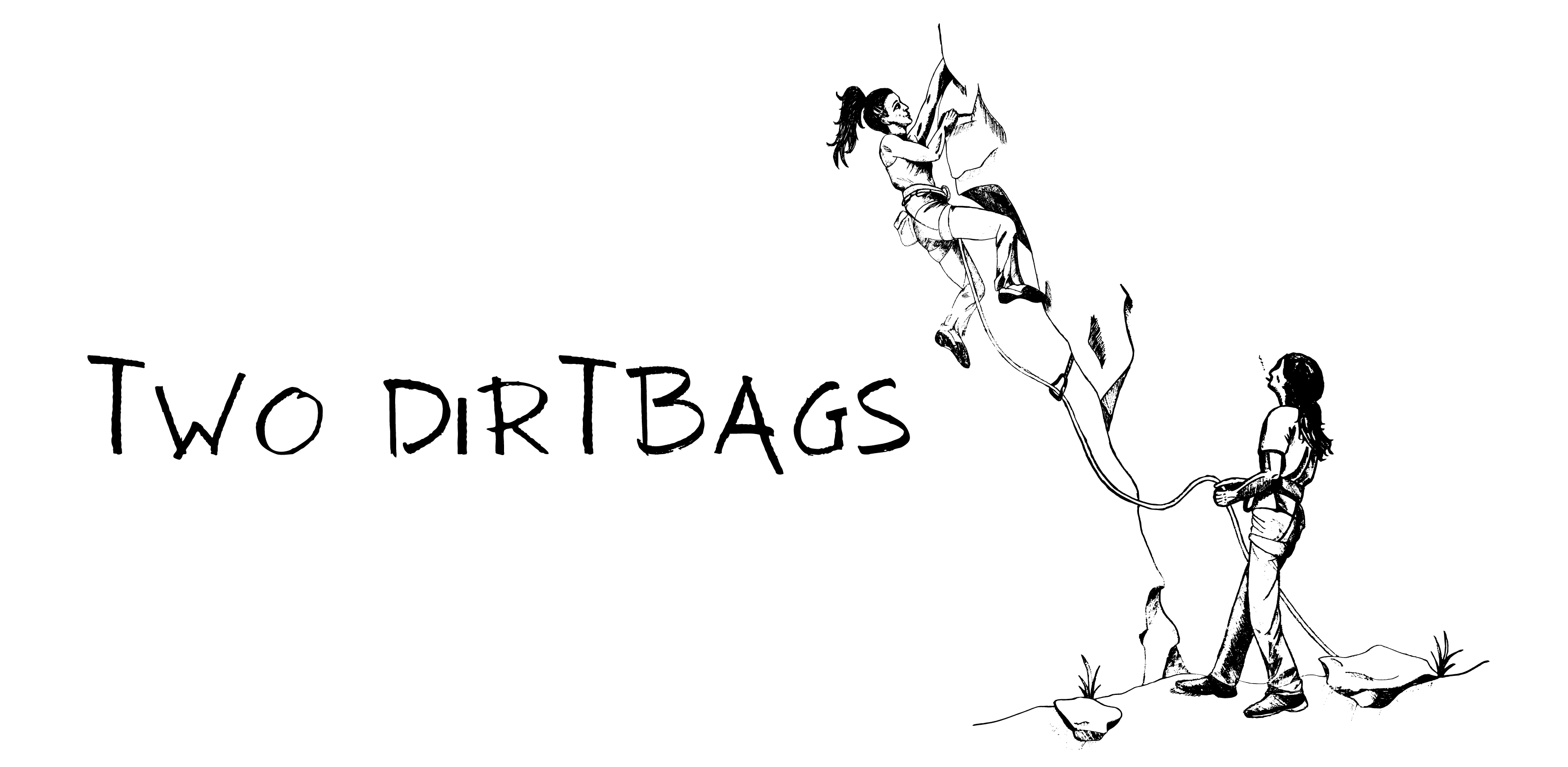
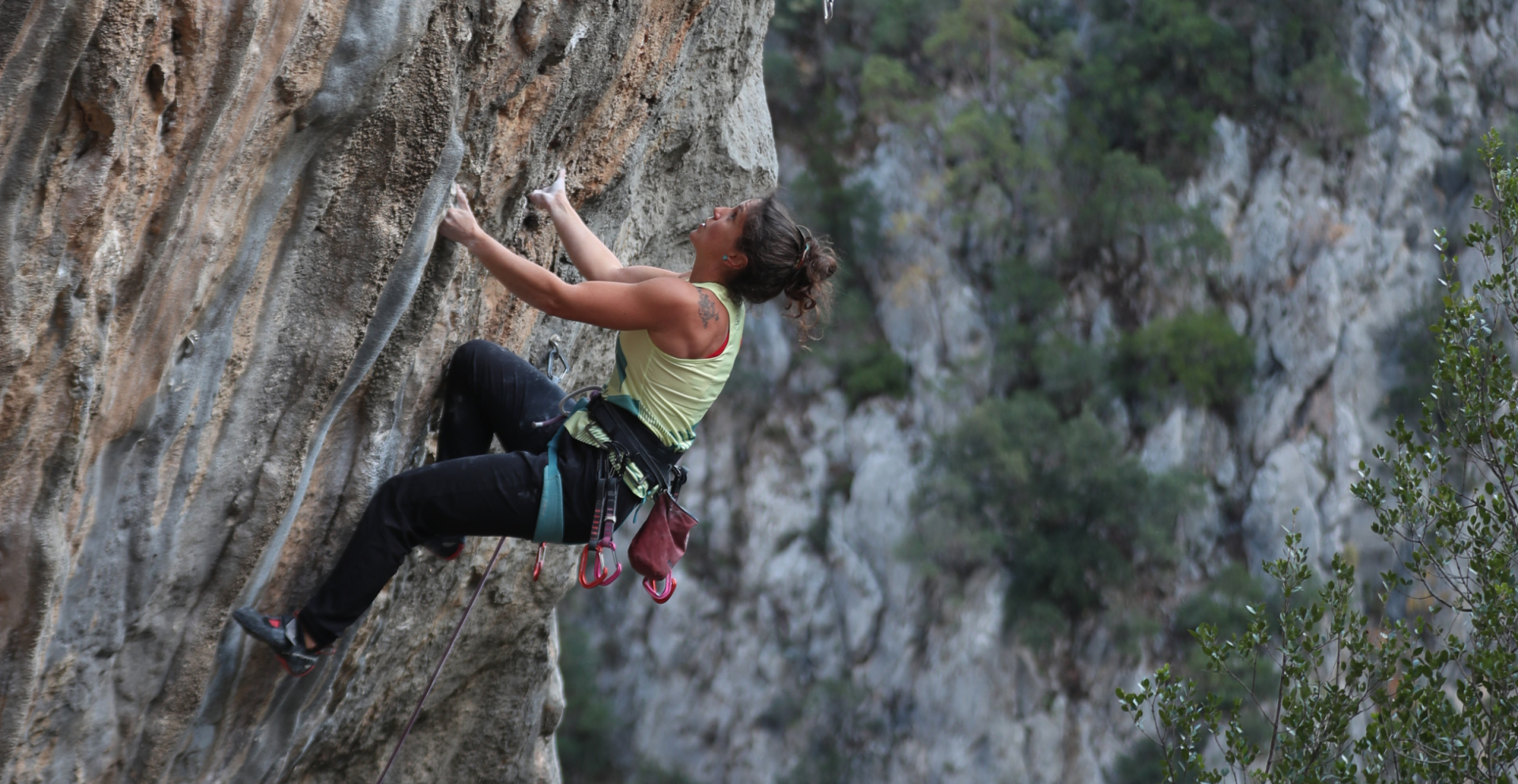
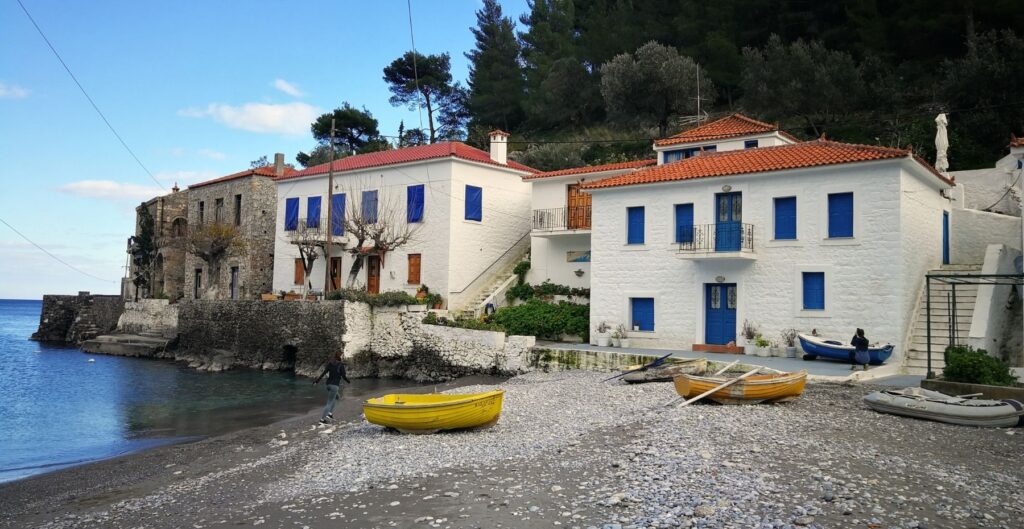
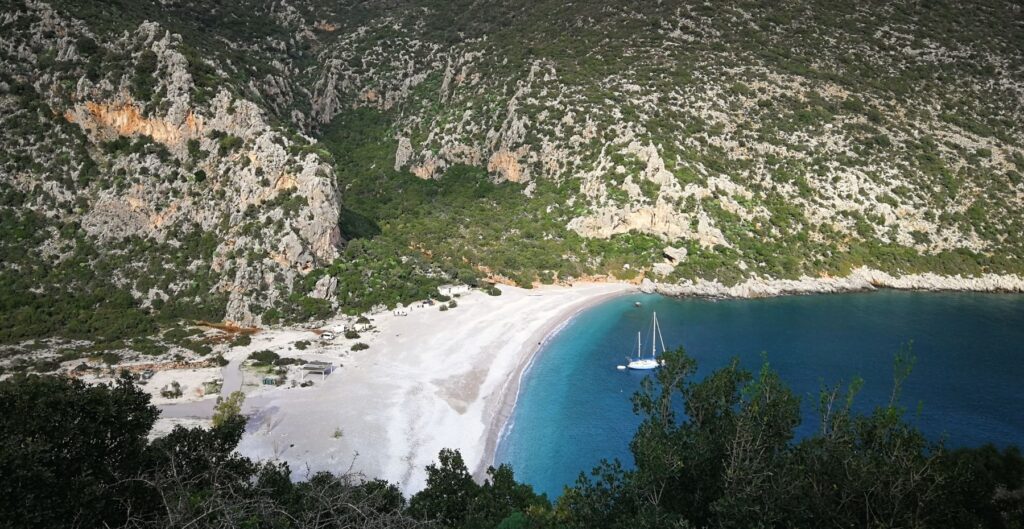
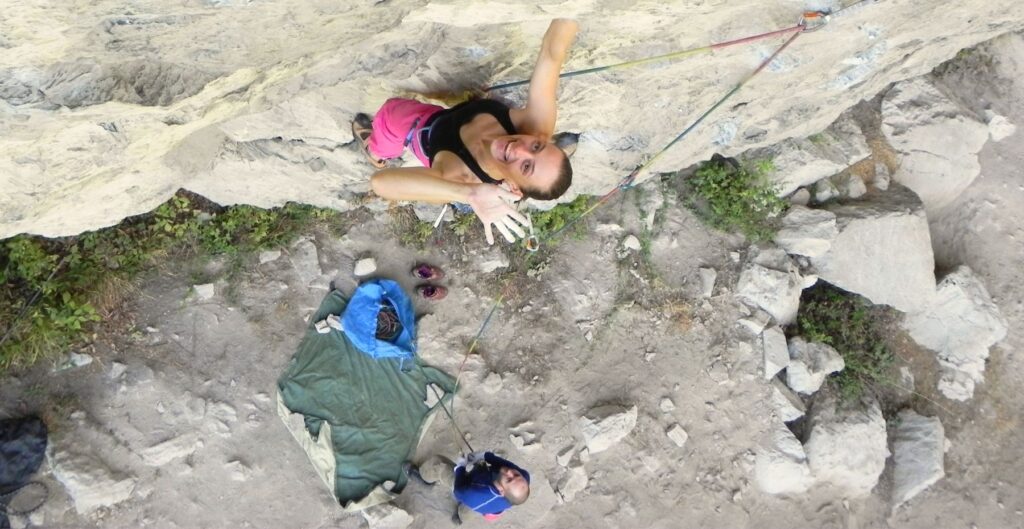
Pingback: Chilling & Climbing in Kaș, Turkey - Two Dirtbags